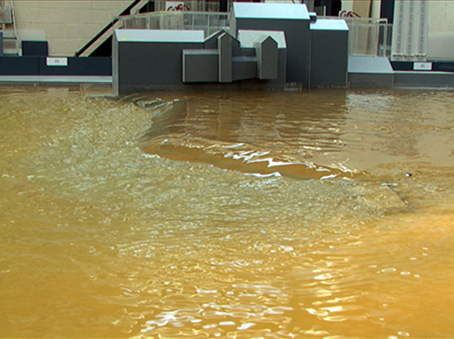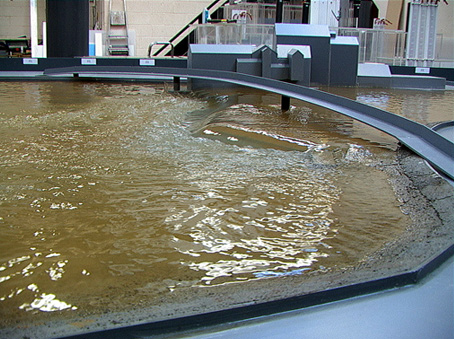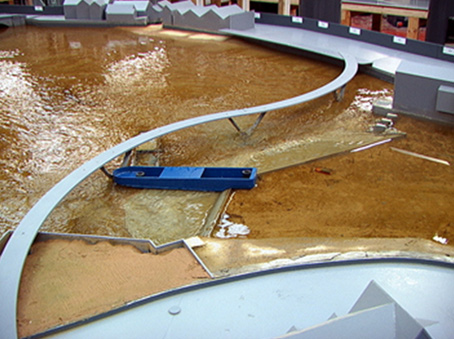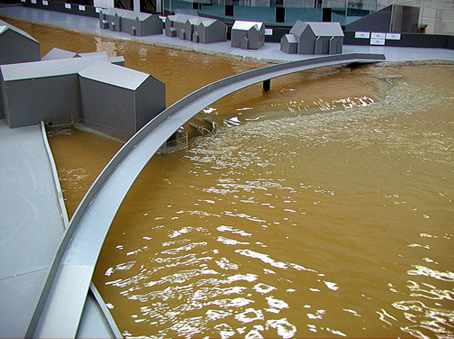Castleford Bay footbridge
Client: City of Wakefield metropolitan district councilScale: 1/50th
Wakefield Metropolitan District Council was promoting a scheme to construct a footbridge over the River Aire at Castleford. Three proposed footbridge arrangements were to be evaluated within the physical model. These proposals comprised a fixed bridge located upstream of Castleford Weir, a floating bridge located upstream of the weir and a fixed bridge located downstream of the weir.
The fixed bridge upstream comprises three equal spans, curved in plan and arched in elevation. The three spans are supported by two slender piers, one of which was to be located within the main river channel, immediately upstream of Castleford Weir, the other was to be located on a promontory adjacent to the sluices.
The model comprised of a 500 metre long reach of the river commencing some 250 metres upstream of the proposed bridge and extending to a point some 50 metres downstream of the existing Castleford Bridge. The model was required to study flood events with return periods of up 1 in 100 years.
The river width was defined by the main river limits, set by the embankment protection measures, which were extended vertically upwards above the predicted top water level, in accordance with the Specification. This was carried out in order to contain all flows within defined boundaries for the purposes of scour/water level assessment.
The model essentially comprised a watertight tray, constructed from opaque plastic material on a substantial timber staging. The main bed profile was laid in using sand/cement mortar to shadows located at the given cross-sections. Additional detail was fabricated from a range of plastic materials. Plastics were used extensively to ensure accurate construction and dimensional stability.
Flow was collected at the downstream end of the model and pumped back to a stilling chamber at the head of the model. Each circulating pump was equipped with its own orifice plate flow meter and control valve.
Water levels in the model were monitored using a point dial gauge mounted on a traveller, this enabled measurement of all water elevations of significance. Such a system has clear advantages over fixed point measurement involving tappings linked to external stilling pots fitted with dial hook gauges. Velocities were measured using a miniature propeller meter. The correct water levels at the downstream end of the model were achieved by varying the amount of water in circuit.
The physical hydraulic model was required to assess the footbridge proposals with respect to the following :-
- Increase in flood risk.
- The potential for scour/deposition at the bridge piers.
- The effect of trash/debris on afflux.
- The risk of boat impact.











